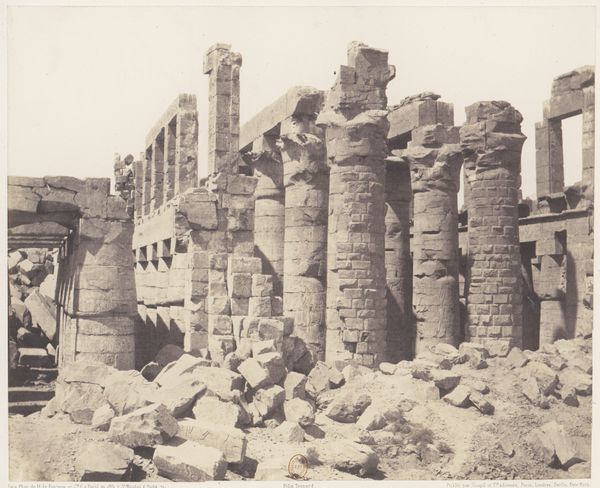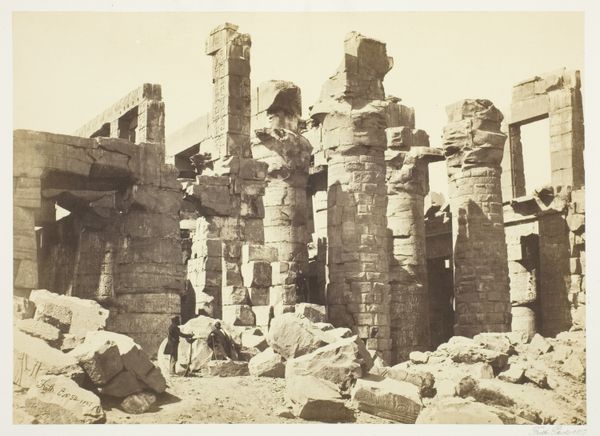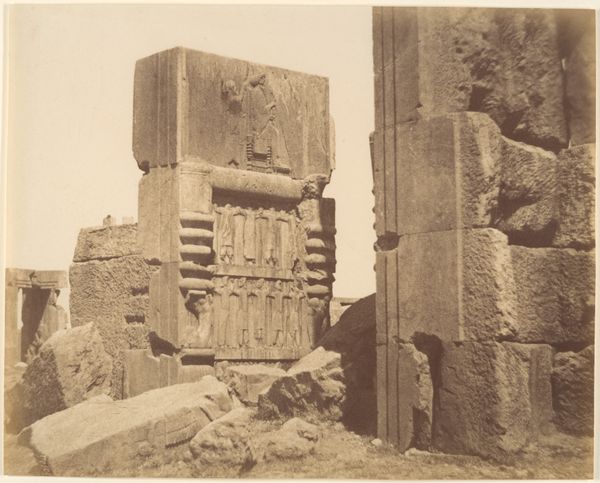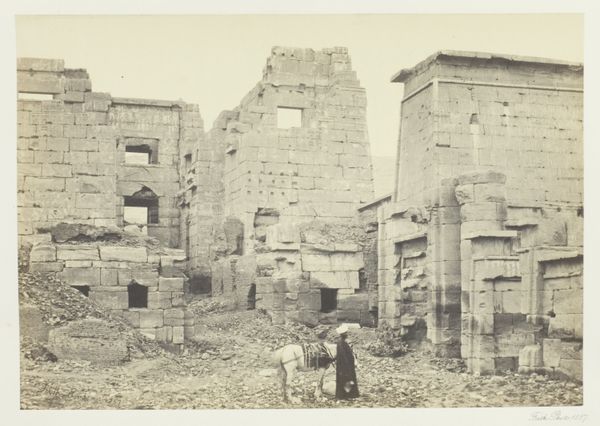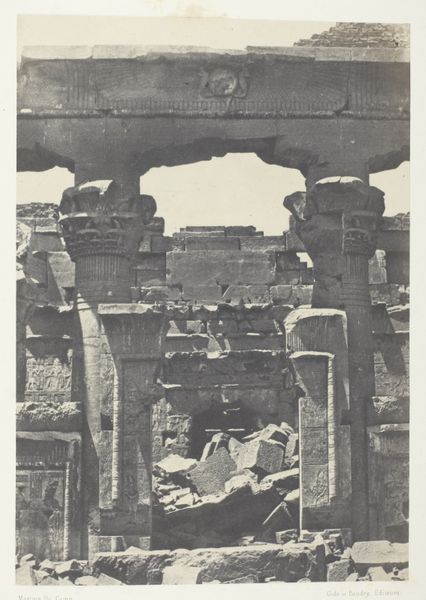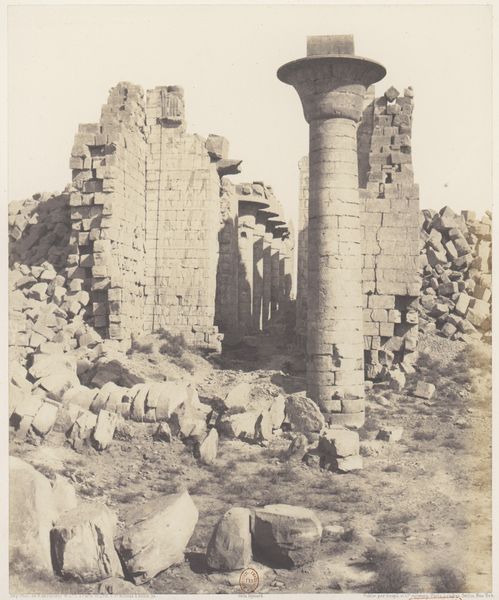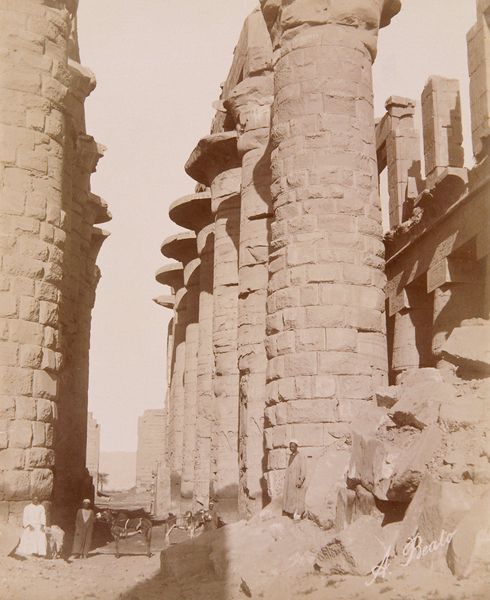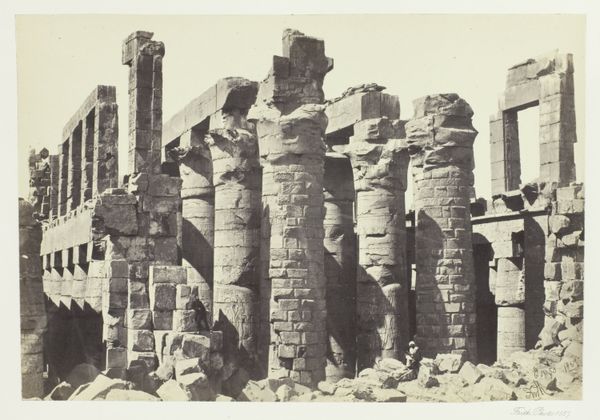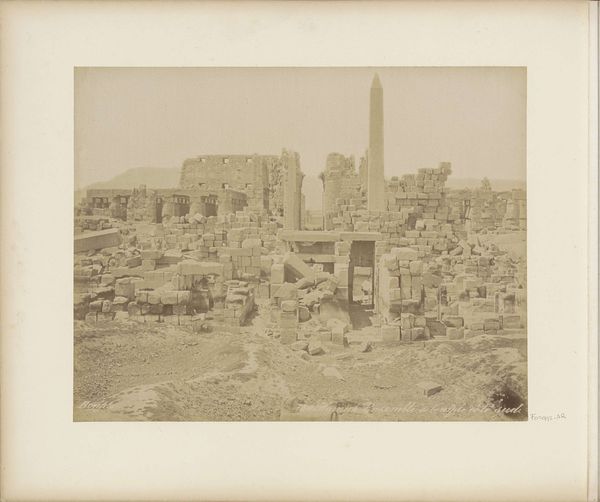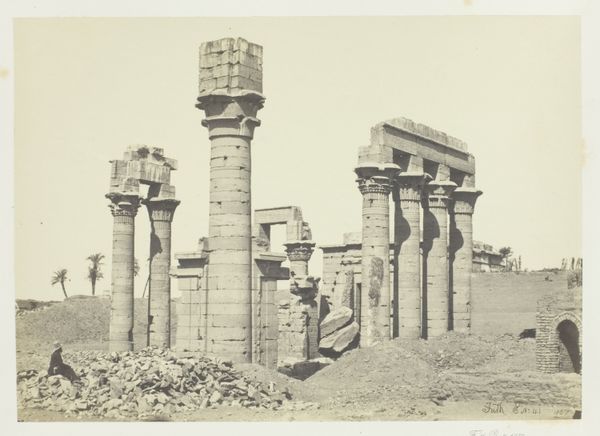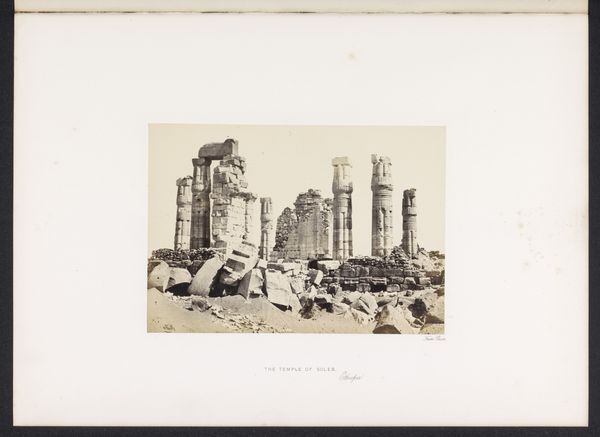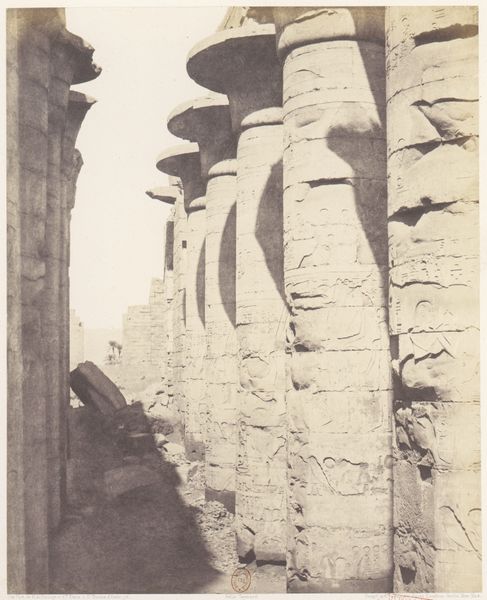
silver, print, photography, gelatin-silver-print
#
silver
# print
#
war
#
landscape
#
ancient-egyptian-art
#
photography
#
egypt
#
england
#
ancient-mediterranean
#
orientalism
#
gelatin-silver-print
Dimensions: 22.5 × 16.1 cm (image/paper); 42.6 × 29.1 cm (album page)
Copyright: Public Domain
Curator: We're looking at Francis Frith's gelatin-silver print, "The Court of Shishak," taken in 1857, now at the Art Institute of Chicago. Editor: The weight! The sheer monumentality… It’s overwhelming. The bones of history jutting out of the sand. Look at those colossal, ravaged walls—they whisper of something truly grand, lost to time. Curator: Indeed. Frith's Orientalist lens, common for his time, really does monumentalize ancient Egypt. What's striking is his use of photography, of light and shadow to enhance a sense of history’s decay and sublime indifference. The silver printing method renders a kind of spectral vision... Editor: That contrast—it pulls the textures right out of the stone! You feel every grain, every fracture. The layering of carved hieroglyphs along with those towering columns...it speaks to a stratified society and belief system dependent on its builders. I'm thinking of the grueling work to extract, transport and lift the material with ancient methods, all feeding into a pharaoh’s cult of personality. Curator: And the small figures at the bottom center--the men give scale. Notice their modern attire, contrasting against the eroded ruins, a striking depiction of Victorian travelers and how insignificant their fleeting presence feels compared to these colossal relics. Editor: Almost voyeuristic, those tiny Victorian men amidst the stone giants, emphasizing a conquering gaze upon the labor and lives reduced to debris. Was it even deemed "art" or merely documentation at that point? And how was this photograph consumed back in England, at the height of their empire, considering who likely owned it, the context it was viewed in? Curator: Interesting thoughts, and a necessary critique. His work walks a complicated line. The craft is undeniable. Perhaps we should ponder if the very act of photographing shifts how we internalize ancient civilizations... transforming tangible memories into spectacles? Editor: Food for thought. And from my standpoint, "The Court of Shishak" serves as a powerful meditation on materiality, time, and labor… reminding us of both the endurance and fragility of human endeavor. Curator: Precisely. The image echoes on, a reminder that what stands, eventually falls and leaves us to find echoes in its wake.
Comments
No comments
Be the first to comment and join the conversation on the ultimate creative platform.
